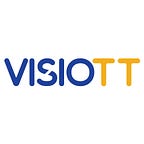The Updated Decision on Brazil Traceability Timeline
Pharmaceutical traceability studies started in 2009 in Brazil, got on with the complementation of the pilot in 2019. As it is known, for the full implementation it is expected to realize to be of April 28, 2022, according to the Brazil traceability timeline. From this date, all the pharmaceuticals in the situation of “finished products” except the non-registered products used in clinical and scientific research will be traceable as stated in RDC №157/2017. Of course, the Brazilian Health Regulatory Agency (ANVISA) has some expectations from all manufacturers in the pharmaceutical supply chain. Pharmaceutical manufacturers are expected to comply with regulations in the National System of Drug Control (SNCM) within the reported Brazil traceability timeline.
SNCM and Expectations
The National Drug Control System (SNCM) collects data that can be questioned by authorized stakeholders in the supply chain such as manufacturers, warehouses, pharmacies, hospitals from the pharmaceutical supply chain in a central database. Sustainable pharmaceutical traceability depends on the harmony of supply chain stakeholders.
Aware of this, SNCM expects pharmaceutical suppliers to comply with certain standards especially the 2D code application in order to achieve traceability in line with the Brazil traceability timeline. Other standards require that GTIN, ANVISA registration number, batch code, expiry date and batch number should be on the pharmaceutical carton. In addition, the product-transport unit hierarchy should also be established. In short, for pharma traceability, products must be serialized and aggregation must be performed.
Meeting Expectations on Brazil Traceability Timeline
Serialization which is the first step of pharmaceutical traceability was requested by RDC 157/2017 within the GS1 standards. As it can be used in many industries, the ISS-100 Carton Serialization Station, which successfully performs serialization in the pharmaceutical industry, is one of the favorites of the field as it can serialize up to 400 cartons per minute. According to the needs of Brazil Traceability Timeline, it also performs DataMatrix coding by using printing technologies such as thermal inkjet, CIJ and laser. The 2D code printed on the carton is viewed with a high-speed industrial camera.
With OCR/OCV technology, human-readable information is verified and non-standard products leave the line with the reject mechanism without stopping the line.
So how can the serialized product be reliably tracked in the supply chain? We actually know the answer to this question. Of course, the aggregation process would provide this.
Stations that combine products, associate them with an upper carrier unit, and print labels are defined as aggregation stations. In addition, integration solutions that turn existing cartoning machines into aggregation stations are also practical applications.
Semi-Automatic Case Packer Station SACP-100 is an effective solution for companies that want to automatically perform case packer operations and combine them with aggregation. While the case packer process is performed, the aggregation process is also carried out, thus speeding up the production by using a small labor force.
The aggregation Integration for Case Packer Stations SASCP-100 is a smart and cost-effective solution that transforms existing case packer stations into an aggregation station. The integration solution consists of vision inspection, industrial computer, label applicator and printer. The solution shaped according to the needs can be supported by the software.
Line Management, Operations Management and Formal Notifications for Pharmaceutical Traceability
The software of VISIOTT Line Manager (Level 2), which provides the management of solutions such as ISS-100, SACP-100, SASCP-100 in production lines for pharmaceutical traceability, can perform real-time control and communication with many hardware.
Fulfilling ANVISA requirements like Line Manager (Level 2), VISIOTT Plant Manager (Level 3) does more than expected as multifunctional software. What could be “expected” and “more”? VISIOTT Plant Manager (Level 3) can assign work orders to lines with the information it receives from any EPCIS server or Level 4 solution, and stores serialization and aggregation data as a result of the work order. So far, we have written the transactions under the “expected” heading. Hang tight, “more” is coming! VISIOTT Plant Manager (Level 3) software allows you to perform your SNCM notifications without needing any Level 4 software. It provides a unique solution by realizing official notifications as well as creating serial numbers, master data and product recipe management.
